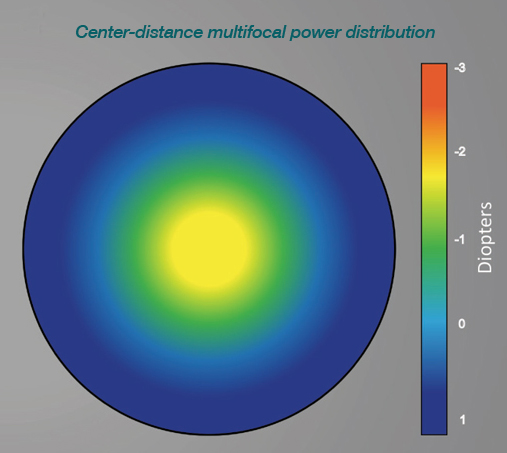 |
Multifocal contact lenses may be more effective than single vision lenses in controlling myopia in its early stage. Photo: Keyur Savla. Click image to enlarge. |
Myopia has proliferated worldwide, prompting researchers to look for ways to minimize its progression. Considering the role of soft contact lenses (CLs) in this area, a recent investigation found multifocals and some single vision lenses may be useful in controlling this condition in young patients.
Additionally, the research team from Poland suggested multifocal wear results in better myopia correction in the first 18 months compared with single vision CLs. On the other hand, both had better outcomes than spectacle lenses at 24 months.
Also of note: multifocals were most effective early in the diagnosis and before the condition intensified.
“In the present study, significant differences were observed in inhibiting the progression of myopia in patients wearing multifocal CLs compared with patients wearing single vision lenses, although the control of myopia in the group of patients wearing single vision lenses was more effective than in the group of patients corrected with glasses,” the authors wrote in their paper.
The observational study included 102 patients who were placed into three groups:
Soft multifocals: 15 girls, nine boys, ages eight to 20, myopia of -3.12±1.77D and a progression rate of -0.23±0.23D after two years). The lenses had an addition of +2.00D, a central zone for distance and periphery for near distance, with a progressive addition.
Single vision CLs: 30 girls, five boys, ages 11 to 20, myopia of -2.88±2.12D and a progression rate of -0.54±0.464D after two years. These lenses stimulated the periphery of the retina by myopic defocus in the periphery.
Single vision spectacle lenses: 25 girls, 18 boys, ages eight to 18, myopia of -1.74±1.41D at admission and progression of -0.86±0.49D after two years.
Additionally, participants were further divided into three subgroups: when myopia was detected before the period of intensive growth, when it was found during the time of intensive growth and when it was diagnosed after the period of intensive growth. Participants were followed up at six, 12, 18 and 24 months.
At two years, the researchers found statistical differences between the multifocal and spectacle lens groups. Considering progression rates, they observed statistically significant changes in the multifocal wearers vs. the single vision CL participants, as well as the multifocal vs. spectacle lens groups, when myopia occurred before the period of intensive growth.
When myopia occurred during the period of intensive growth, the investigators noted a difference between the multifocal vs. spectacle groups and the single vision CLs vs. spectacle correction. When myopia occurred after a period of intensive growth, the authors didn’t find any significant differences between the groups.
Some single vision CLs, especially those which reduce peripheral hyperopic defocus, can be useful in myopia control, especially in patients with myopia onset during the period of intensive growth, the researchers noted. Additionally, significant statistical differences were still present after two years.
Concerning multifocals, the current findings mirror other study results, the investigators said. It is assumed that due to the lens design (a central far power and peripheral addition), hyperopia in the peripheral part of the retina was reduced and the progression of myopia was diminished, the authors explained.
An important observation was the occurrence of the best results of multifocal CL therapy in the first two periods of the study—after the first six months and one year—which then translated into the final results at two years, the investigators said.
Malinowksi A, Mrugacz M, Stopa M, et al. A clinical study of the impact of soft contact lenses on the progression of myopia in young patients. Clin Ophthalmol. January 22, 2022. [Epub ahead of print]. |

